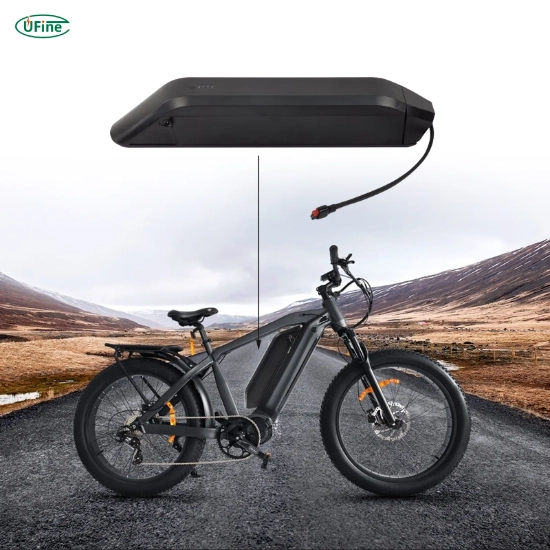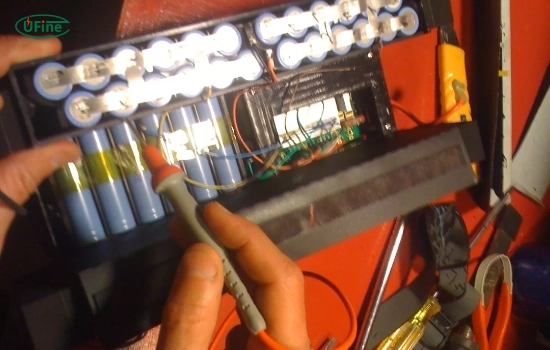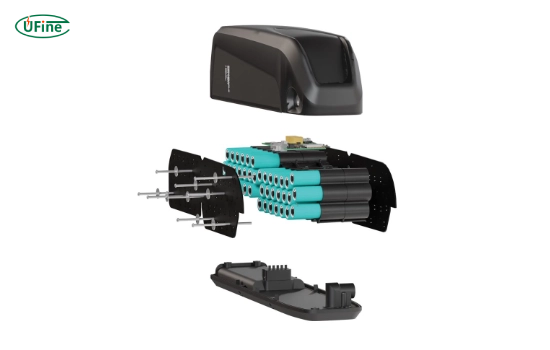E-bike battery replacement is a critical aspect of e-bike maintenance that every owner should understand. As e-bikes gain popularity for their eco-friendly and efficient transportation options, knowing how to properly care for and replace their batteries cannot be overstated. A well-maintained battery not only extends the lifespan of your e-bike but also enhances your riding experience. This guide will delve deep into everything you need about e-bike battery replacement, ensuring you are well-equipped to handle this essential task.
Part 1. What is an ebike battery?
An e-bike battery is the powerhouse of an electric bicycle, providing the necessary energy for the motor to function. Most e-bikes use lithium-ion batteries, which are favored for their lightweight design and high energy capacity. These batteries are designed to be rechargeable and can vary in size, voltage, and capacity, depending on the e-bike model. Understanding the specifications of your e-bike battery is crucial for effective maintenance and replacement.
Part 2. How long do ebike batteries last?
E-bike batteries typically last between 3 to 5 years, but this can vary based on several factors, including usage patterns, maintenance, and environmental conditions. Most batteries can endure 500 to 1,000 charge cycles before their performance degrades significantly. As a battery ages, its ability to hold a charge diminishes, reducing range and performance.
How Long Does an Ebike Battery Last?
Part 3. Signs that your ebike battery needs replacement
Identifying signs of battery failure is essential for maintaining your e-bike’s performance. Here are some common indicators that your e-bike battery may need to be replaced:
- Decreased Range: If your e-bike no longer travels as far on a full charge, it could be a sign that the battery is losing capacity.
- Longer Charging Times: An increase in the time it takes to charge your battery fully may indicate that it is no longer functioning optimally.
- Physical Damage: Inspect the battery for any visible signs of damage, such as swelling, cracks, or leaks. These issues can pose safety risks and indicate that the battery should be replaced.
- Inconsistent Power Delivery: If you experience sudden drops in power or the motor cuts out unexpectedly, it may be a sign that the battery is failing.
Part 4. How to test your ebike battery?
Testing your e-bike battery is a crucial step before deciding to replace it. Here’s a detailed guide on how to assess its condition:
- Check the Voltage: Use a multimeter to measure your battery’s voltage. Compare this reading to the rated voltage specified by the manufacturer. A significant voltage drop may indicate that the battery is losing its ability to hold a charge.
- Conduct a Load Test: This test simulates the battery’s performance under normal operating conditions. Connect a load tester to the battery and measure the voltage while a load is applied. If the voltage drops significantly under load, the battery is likely failing.
- Assess the Battery Management System (BMS): Many e-bike batteries have a BMS that monitors the battery’s health and performance. If your battery has a display or indicator lights, check for any warning signals that may indicate a problem.
- Professional Assessment: If you need more clarification about your findings or more tools, consider taking your battery to a professional e-bike shop. They can conduct a thorough assessment and provide expert advice on whether a replacement is required.
Part 5. How to choose the right replacement battery?
Selecting the correct replacement battery for your e-bike is crucial for ensuring compatibility and performance. Here are some key considerations to keep in mind:
- Compatibility: Ensure that the new battery is compatible with your e-bike model. Check the specifications, including voltage (typically between 24V to 48V) and capacity (measured in amp-hours, Ah). Using a battery that is not compatible can lead to performance issues or even damage to your e-bike.
- Quality and Brand: Opt for high-quality batteries from reputable manufacturers. While cheaper alternatives may be tempting, they often need more reliability and performance from established brands. Look for batteries with positive reviews and a solid warranty.
- Capacity and Range: Consider the capacity of the replacement battery. A higher-capacity battery can provide a more extended range, which is beneficial for longer rides. However, larger batteries may add weight to your e-bike, so find a balance that suits your needs.
- Battery Type: Lithium-ion batteries are the most common, but some e-bikes may use different types, such as lead-acid or nickel-metal hydride (NiMH). Ensure you are selecting the correct type for your e-bike.
- Warranty and Support: Look for batteries that come with a warranty. A good warranty indicates the manufacturer’s confidence in their product and gives you peace of mind regarding your investment.
Part 6. How to replace your ebike battery?
Replacing an e-bike battery can seem daunting, but it can be a straightforward process with the proper steps. Here’s a detailed guide to help you through the replacement:
- Safety First: Before starting, ensure your e-bike is powered off and disconnected from any charging source. This will help prevent any electrical accidents.
- Remove the Old Battery: Depending on your e-bike model, the battery may be in a removable compartment or integrated into the frame. If it’s removable, unlock it using the key provided and slide it out of the compartment. For integrated batteries, you may need to unscrew or unclip certain parts to access the battery.
- Inspect the Connectors: Before installing the new battery, inspect the connectors for any dirt or corrosion. Clean them gently with a dry cloth to ensure a good connection.
- Install the New Battery: Align the new battery with the connectors and slide it into place. Follow the manufacturer’s instructions to ensure it locks securely.
- Test the Installation: Power on your e-bike and check that everything functions correctly. Take a short test ride to ensure the battery performs as expected.
- Please dispose of the Old Battery Properly: It’s essential to dispose of your old battery responsibly. Many manufacturers offer recycling programs, or you can take it to a local recycling center that accepts lithium-ion batteries.
Part 7. FAQs
-
What type of battery is best for e-bikes?
Lithium-ion batteries are generally considered the best option for e-bikes due to their high energy density, lightweight design, and long lifespan. -
How can I extend the life of my e-bike battery?
To extend the life of your e-bike battery, avoid deep discharges, store it in a cool, dry place, and keep it charged between 20% and 80% whenever possible. -
Can I replace my e-bike battery with a higher-capacity one?
Yes, you can replace your e-bike battery with a higher capacity, but ensure it is compatible with your e-bike’s motor and controller to avoid any issues. -
How do I know if my battery is defective?
Signs of a defective battery include decreased range, longer charging times, physical damage, and inconsistent power delivery. -
Is it safe to replace an e-bike battery myself?
Yes, replacing a battery can be safe if you follow the manufacturer’s guidelines and take necessary precautions. If you’re unsure, consulting a professional is always a good option.
Related Tags:
More Articles

How to Choose the Best Floor Scrubber Battery for Commercial Cleaning?
Selecting the ideal floor scrubber battery ensures a long runtime, rapid charging, and minimal maintenance for efficient commercial cleaning operations.
Battery for Blower vs Battery for Leaf Vacuum: Which One Should You Choose?
Battery for blower vs leaf vacuum—learn the key differences in power, fit, and runtime to choose the right battery for your outdoor tool needs.
How to Choose the Right Battery for Blower?
Choosing the right blower battery? Consider voltage, capacity, chemistry & usage. This guide helps match the best battery for peak performance.
How to Choose the Best Insulated Battery Box for Lithium Batteries?
Choosing the Best Insulated Battery Box for Lithium Batteries? Discover key factors such as size, material, and safety for optimal protection and performance.
7 Critical Elements on a Lithium Battery Shipping Label
What must be on a lithium battery shipping label? Learn 7 key elements to ensure safety, legal compliance, and correct handling across all transport modes.






